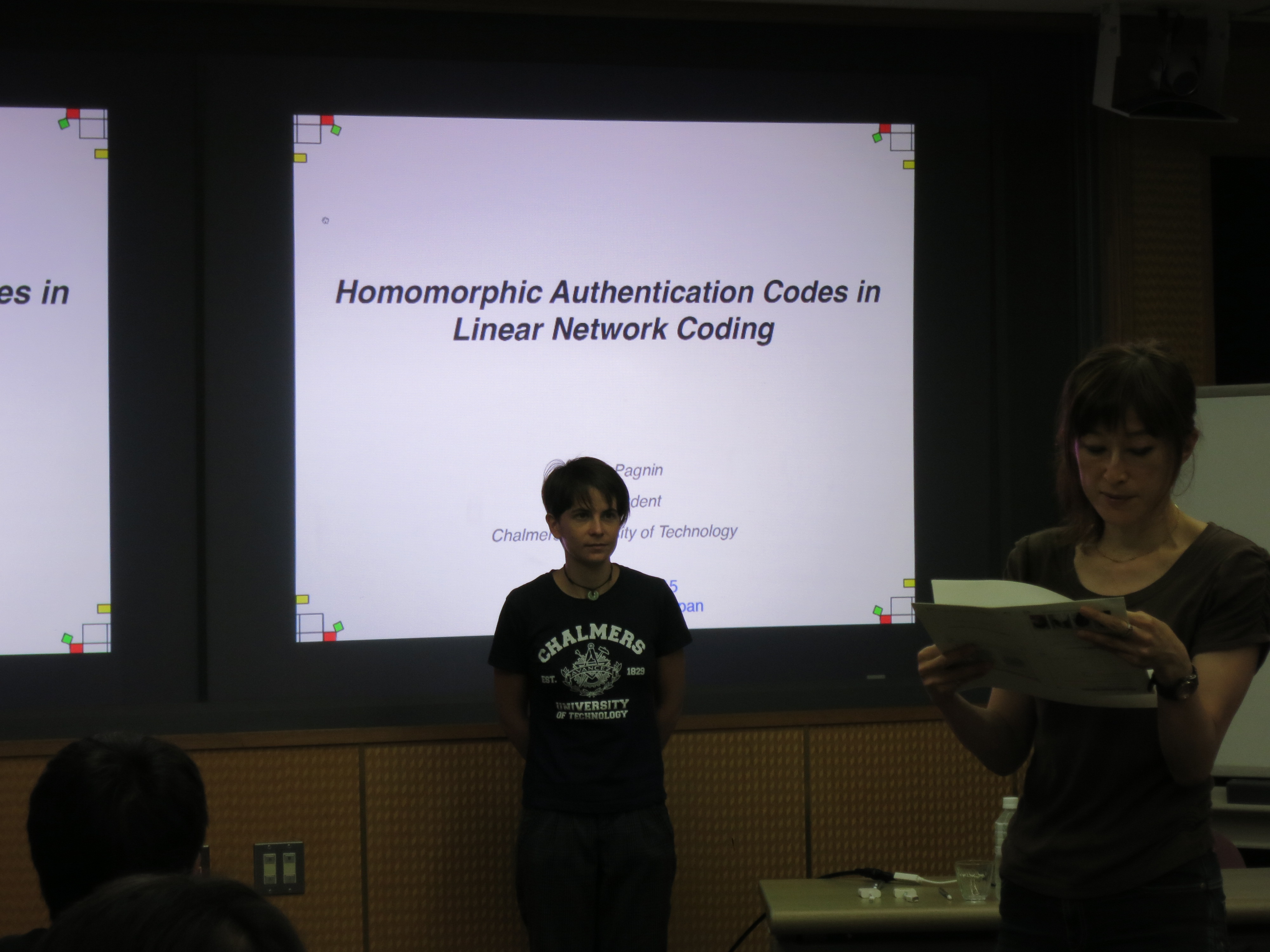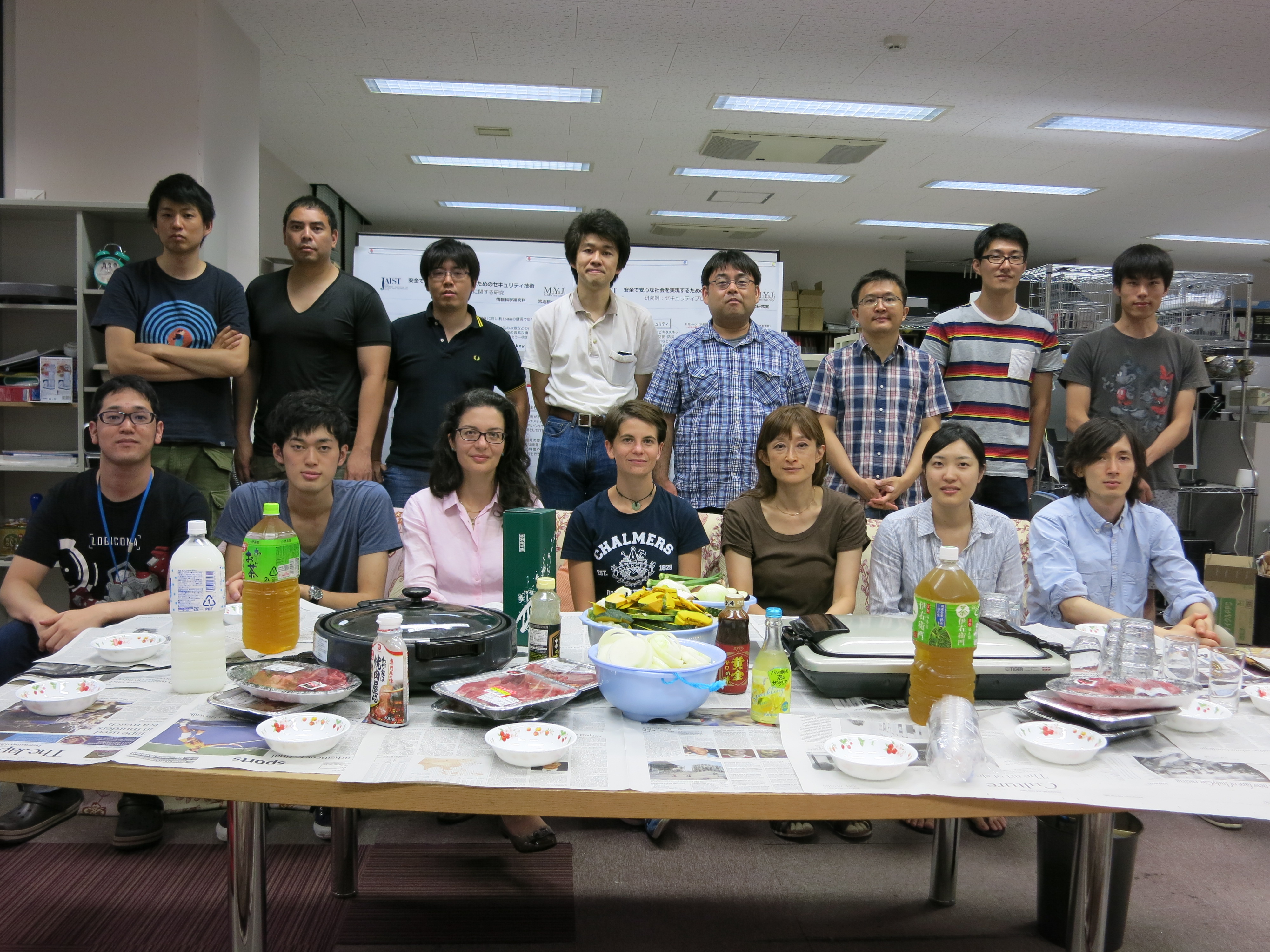 日時: 平成27年8月27日 10時30分-12時00分
日時: 平成27年8月27日 10時30分-12時00分
 場所: 情報科学研究科 5階 コラボレーションルーム7
場所: 情報科学研究科 5階 コラボレーションルーム7
 講演者氏名: Elena Pagnin
講演者氏名: Elena Pagnin
チャルマース工科大学(スウェーデン)
 講演題目1: Homomorphic authentication in Linear Network Coding
講演題目1: Homomorphic authentication in Linear Network Coding
Authentication codes are important building block of many secure
communication systems. In this talk, I will present homomorphic
authentication codes (HACs in short), which represent an unconditional
secure method to achieve message authentication in networks that employ
linear-coding. The main feature of HACs is to be linear in the messages
(homomorphic), thus HACs perfectly suit communication networks in which
the nodes perform linear operation on the incoming data (e.g. linear
network coding). The study of authentication codes in the linear network
coding framework is motivated by the fact that, as a transmission
method, linear coding provides higher throughput than the classical
store and forward method.
 講演題目2: On the Leakage of Information in Biometric Authentication
講演題目2: On the Leakage of Information in Biometric Authentication
In biometric authentication protocols, a user is authenticated
or granted access to a service if her fresh biometric trait matches the
reference biometric template stored on the service provider. This
matching process is usually based on a suitable distance which measures
thesimilarities between the two biometric templates. In this talk, we
prove that, when the matching process is performed using a specific
family of distances, then information about the reference template is
leaked. We show how it is possible to perform a template recovery attack
even in privacy-preserving biometric authentication protocols and we
formalise this “leakage of information” in a mathematical framework.


[戻る]
 日時: 平成27年8月27日 10時30分-12時00分
日時: 平成27年8月27日 10時30分-12時00分 場所: 情報科学研究科 5階 コラボレーションルーム7
場所: 情報科学研究科 5階 コラボレーションルーム7 講演者氏名: Elena Pagnin
講演者氏名: Elena Pagnin
 講演題目1: Homomorphic authentication in Linear Network Coding
講演題目1: Homomorphic authentication in Linear Network Coding
 講演題目2: On the Leakage of Information in Biometric Authentication
講演題目2: On the Leakage of Information in Biometric Authentication
 日時: 平成27年8月27日 10時30分-12時00分
日時: 平成27年8月27日 10時30分-12時00分 場所: 情報科学研究科 5階 コラボレーションルーム7
場所: 情報科学研究科 5階 コラボレーションルーム7 講演者氏名: Elena Pagnin
講演者氏名: Elena Pagnin
 講演題目1: Homomorphic authentication in Linear Network Coding
講演題目1: Homomorphic authentication in Linear Network Coding
 講演題目2: On the Leakage of Information in Biometric Authentication
講演題目2: On the Leakage of Information in Biometric Authentication